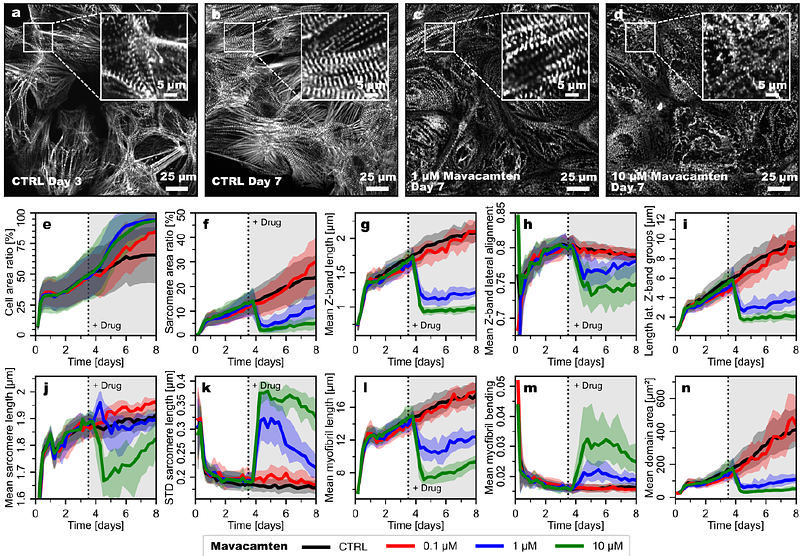SarcAsM: AI-based multiscale analysis of sarcomere organization and contractility in cardiomyocytes

SarcAsM: AI-based multiscale analysis of sarcomere organization and contractility in cardiomyocytes
Haertter, D.; Hauke, L.; Driehorst, T.; Nishi, K.; Long, J.; Tiburcy, M.; Berecic, B.; Primessnig, A.; Bao, G.; Cyganek, L.; Schmidt, C. F.; Zimmermann, W. H.
AbstractCardiomyocyte function critically depends on sarcomere dynamics and their organization in myofibrils. To uncover how cardiomyocyte function emerges from individual sarcomere dynamics, comprehensive analysis of Z-bands (nanometer scale), sarcomeres (~2 micrometer scale), and myofibrils (~10 to 100 micrometer scale) is required. Tools for such multiscale analyses are presently lacking. Here we introduce the Sarcomere Analysis Multitool (SarcAsM), which combines deep learning and graph-based methods for automated, fast, and unbiased structural assessment of sarcomeric Z-bands, sarcomeres, and myofibrils as well as their organization in larger myofibril domains. SarcAsM features a generalist deep learning model, pre-trained on a broad range of experimental and published images, ensuring its versatile application and immediate usability across diverse datasets. Finally, we demonstrate the versatile utility of SarcAsM in analyzing sarcomere structure and dynamics under acute and chronic drug exposure in hiPSC-derived cardiomyocytes with fluorescently tagged Z-bands. SarcAsM is available as open-source Python package and stand-alone application.